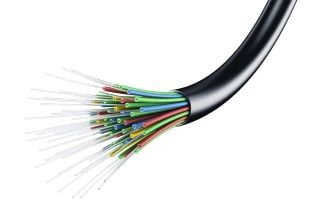

Nokia and Facebook are setting speed records under the sea.
The two companies revealed the results of multiple field trials of their 5,500-kilometer (3,418-mile) submarine cable between New York and Ireland, saying that the cable used new probabilistic constellation shaping from Nokia Bell Labs and shaped 64-QAM (quadrature amplitude modulation), setting a spectral efficiency record of 7.46 b/s/Hz (bits per second per Hertz) and boosting the system’s capacity by nearly 2.5 times.
Nokia and Facebook also tested an 11,000-kilometer (6,835-mile) round-trip submarine transmission using shaped 64-QAM, and the two companies reported a record spectral efficiency of 5.68 b/s/Hz, as well as their first demonstrations of wavelengths of 200 gigabits per second and 250 Gb/s and 16 QAM via a transatlantic submarine route.
The two companies said the results of the first test indicated the potential for upgrading the cable to 32 terabits per second, per fiber, and the second test demonstrated “sufficient performance margin to support reliable, commercial operation.”
Full results will be presented in a post-deadline paper at the Optical Fiber Communication Conference and Exhibition, being held in Los Angeles Tuesday through Thursday.
Facebook global optical network architect Stephen Grubb said in a release announcing the test results:
Facebook wants to increase the pace of innovation and adoption of next-generation optical technologies. This field trial with Nokia demonstrates that the scalable optical technology of PCS together with narrow linewidth laser sources can achieve capacities extremely close to the Shannon limit. This ensures that we are both maximizing our investment in submarine cable systems, as well as continuing to drive the cost per bit of submarine transport lower.
Nokia head of optical networking Sam Bucci added:
We are thrilled to partner with Facebook to promote our common commitment to accelerating innovation in optical transmission. By demonstrating promising areas of Nokia Bell Labs research such as PCS, as well as coherent technologies available today, we hope to chart a path forward for the industry toward higher capacities, greater reach and more network flexibility.

